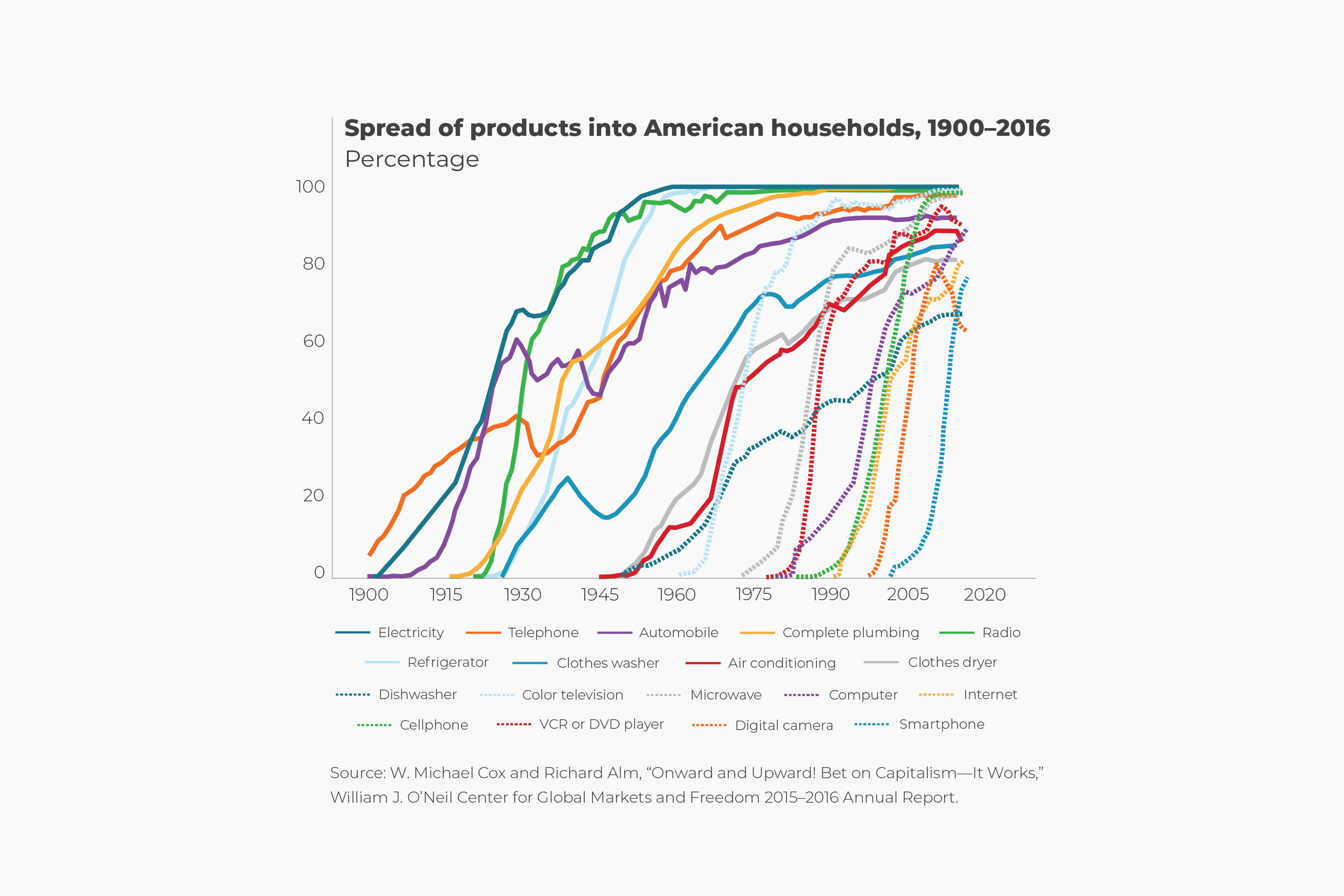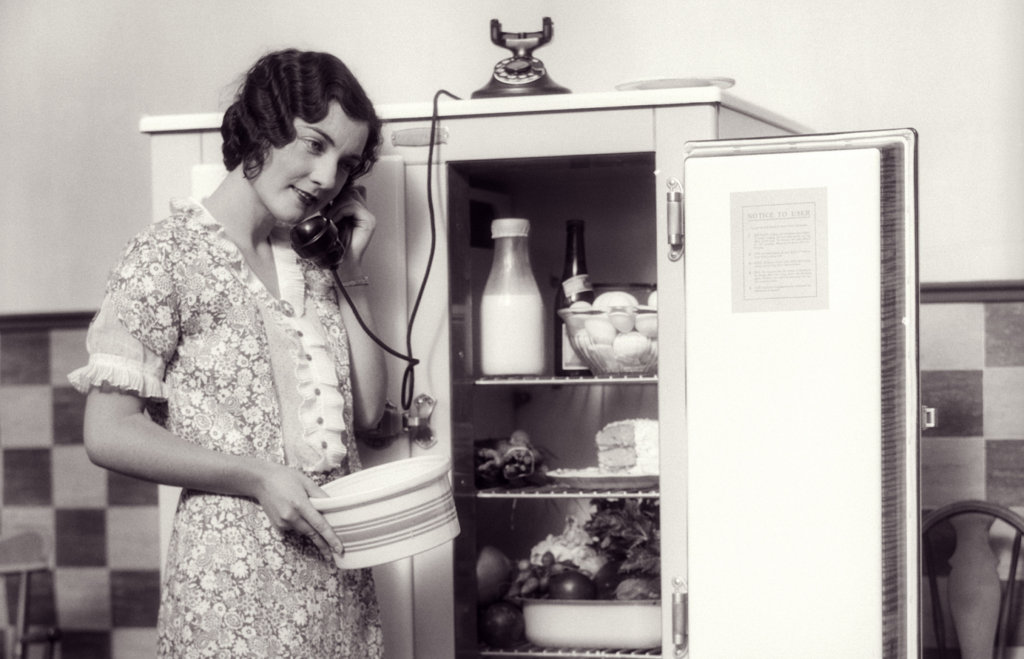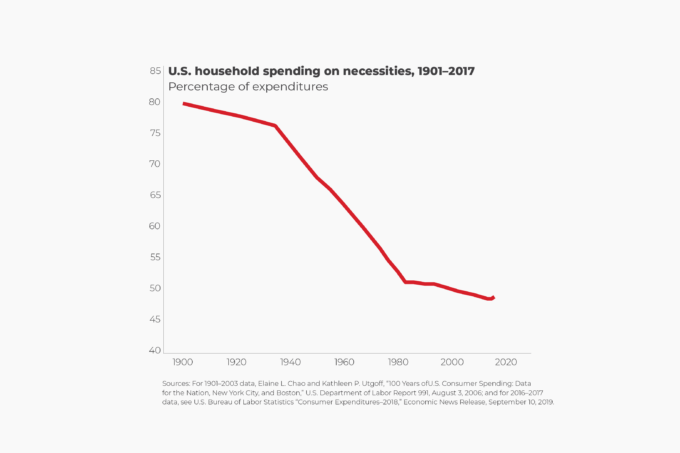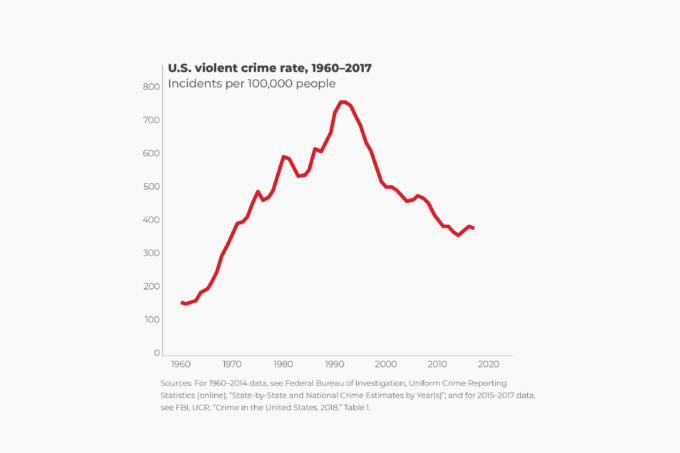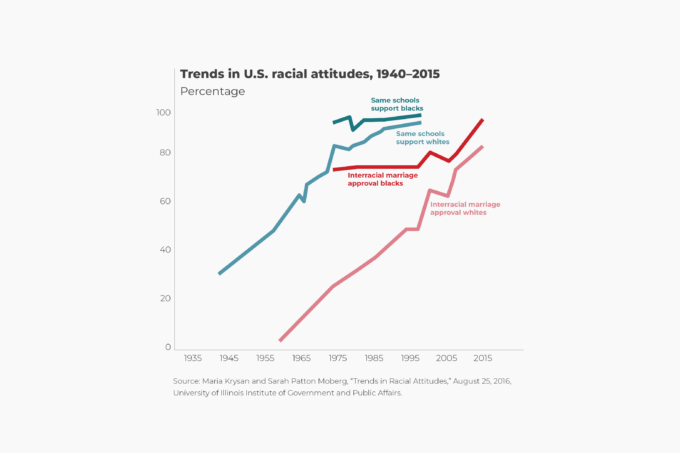Economic prosperity is often measured using personal income or wealth. Neither of those two measures, however, provides a full picture of people’s material well-being. Standards of living can increase because of both falling prices and rising incomes. Even people with falling incomes can be better-off, as long as the cost of living decreases at a faster pace than incomes shrink.
Consider the cost and adoption of home appliances. In 1968, for example, a 23-inch Admiral color TV cost $2,544 in 2018 U.S. dollars, or 120 hours of labor in the manufacturing sector. In 2018, a 24-inch Sceptre high-definition LED TV cost $99.99, or 4.7 hours of labor at the average hourly wage in the manufacturing sector. That’s a reduction of 96 percent in human effort.
In 1968, a 16.2-cubic-foot refrigerator cost $2,725 (in 2018 U.S. dollars), or 128 hours of labor. In 2018, an 18-cubic- foot refrigerator cost $497, or 23 hours of labor.1 That’s a reduction of 97 percent in human labor. Over the same period, the cost of a 5,000-Btu air conditioner fell from $640, or 30 hours of work, to $136, or 6.4 hours of work—an 80 percent decline (both prices are in 2018 U.S. dollars).2
When Texas Instruments introduced the TI-2500 Datamath handheld calculator in 1972, it cost $905 (in 2018 dollars) or 43 hours of labor. The company’s solar-powered TI30X IIS scientific calculator sold for $8.88 in 2018, or about 25 minutes of work.3 That’s a decline of 99 percent. In 1981, the cheapest IBM personal computer cost $4,459 (in 2018 U.S. dollars), or 210 hours of labor. An Insignia tablet and keyboard combo cost $120 in 2018, or 5.6 hours of labor. Ignoring the vast increase in functionality, that’s a reduction of 97 percent.
As late as 1971, only 43.3 percent of all U.S. households had a color television. By 2005, 97.4 percent of poor U.S. households owned a color TV. Similar stories can be told of washing machines, dishwashers, clothes dryers, refrigerators, freezers, stoves, and vacuum cleaners. And the speed of adoption of new products is increasing. It took about a half century from the invention of the telephone to the time when 50 percent of U.S. households owned one. In contrast, after only 12 years of smartphones hitting the stores, 50 percent of individual Americans possessed one.
- HomeDepot.com, “18 Cu. Ft. Top Freezer Refrigerator in White,” price as of December 2018.
- “Pennys Extra Value Days” ad, Florence (SC) Morning News, May 3, 1968, https://newspaperarchive.com/florence-morning-newsmay-03-1968-p-9/; and “5,000 BTU 115-Volt Window-Mounted Mini-Compact Air Conditioner with Mechanical Controls,” HomeDepot. com, price as of December 2018, https://www.homedepot.com/p/Frigidaire-5-000-BTU-115-Volt-Window- Mounted-Mini-Compact-Air-Conditioner-with-Mechanical-Controls-FFRA051WAE/308328843.
- SHZOP.com, “Texas Instruments TI-30X IIS 2-Line Scientific Calculator, Black with Blue Accents”, price as of December 2018.

